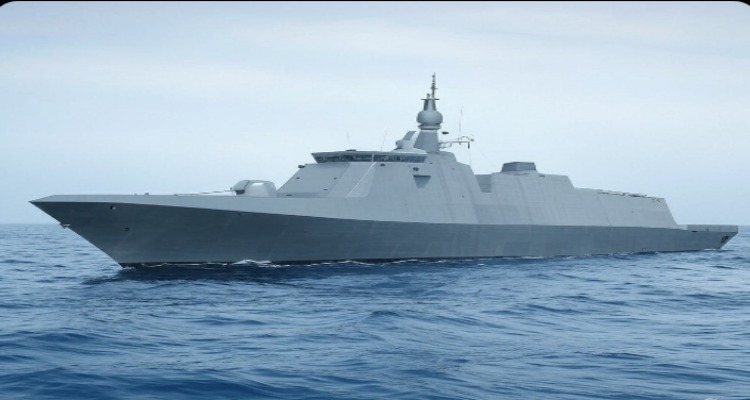INS Tamal: India’s Stealth Frigate Power Grows
India strengthens its naval edge with INS Tamal, a Russian-built stealth frigate, enhancing combat readiness amid rising regional tensions.
INS Tamal: India’s Naval Might Gets a Stealthy Upgrade
In a significant step toward strengthening its maritime dominance, India is set to commission INS Tamal, a stealth frigate built by Russia, marking the arrival of the second of four powerful warships under a defense deal inked in 2016. With this strategic addition, the Indian Navy deepens its multi-dimensional naval warfare capabilities—at a time when regional tensions, particularly with Pakistan, remain high in the Arabian Sea.
The 3,900-tonne frigate is nearing completion at Russia’s Kaliningrad shipyard and will undergo final trials, including live weapon firing, before sailing to Indian shores. Following the induction of its sister ship, INS Tushil, last December, INS Tamal will further reinforce India’s surface fleet with cutting-edge stealth and firepower.
Stealth and Firepower: What Sets INS Tamal Apart
INS Tamal belongs to the advanced Krivak-III class of frigates, a line known for their versatility and combat efficiency. Designed for blue water operations, the vessel is capable of engaging threats across air, surface, subsurface, and electronic spectrums. It features a suite of high-end sensors and advanced weaponry, including:
- BrahMos supersonic cruise missiles, now upgraded to a 450-kilometer strike range.
- Shtil surface-to-air missiles, launched vertically and with enhanced range and precision.
- Anti-submarine torpedoes and rocket systems, enhancing underwater threat response.
Additionally, INS Tamal can host multi-role helicopters like the Kamov-28 for anti-submarine operations and the Kamov-31 for airborne early warning—critical assets that significantly amplify the frigate’s mission profile.
A Strategic Naval Leap Amid Rising Regional Strains
The timing of INS Tamal’s commissioning comes as no coincidence. India has been actively reinforcing its maritime posture in the Arabian Sea amid increasing hostilities with Pakistan and broader strategic challenges in the Indo-Pacific.
On the same day the news of INS Tamal surfaced, India successfully tested indigenously developed multi-influence ground mines. Designed by the Defence Research and Development Organisation (DRDO), these underwater mines target stealth ships and enemy submarines with sophisticated sensors that respond to multiple stimuli—magnetic, acoustic, and pressure-based triggers. Defense Minister Rajnath Singh hailed the trial as a leap in undersea warfare capabilities.
Together, these advancements signal India’s intent to secure dominance not just at the surface but beneath the waves as well.
The Indo-Russian Naval Pact: More Than Just Hardware
The roots of this naval evolution lie in the $2.3 billion defense agreement signed between India and Russia in 2016. The deal called for four upgraded Krivak-III class frigates—two built in Russia, and two in India under a transfer of technology pact. INS Tushil and INS Tamal are the first batch, while the remaining two, INS Triput and INS Tavasya, are currently under construction at Goa Shipyard.
This collaboration not only strengthens India’s fleet but also builds long-term industrial capacity. The Indian Navy already operates six similar Russian-origin frigates—three Talwar-class and three Teg-class—commissioned between 2003 and 2013. The continuity in design philosophy ensures streamlined integration, training, and maintenance.
Cutting Through the Noise: Why This Matters for India
India’s naval doctrine has increasingly focused on projecting power and safeguarding maritime trade routes that are vital to the country’s economy and security. As global maritime tensions rise—from the Red Sea to the South China Sea—India’s ability to operate advanced stealth platforms like INS Tamal provides both deterrence and operational reach.
More importantly, these vessels are built for sustained operations. Their high-speed capabilities—reaching over 30 knots—combined with extensive automation and stealth measures across radio, infrared, and acoustic channels, make them formidable assets. In high-threat environments, survivability and situational awareness can be the difference between success and catastrophe.
Conclusion: A Silent Sentinel in Troubled Waters
The imminent induction of INS Tamal reaffirms India’s commitment to a future-ready naval force. In a region where maritime power increasingly dictates geopolitical leverage, stealth frigates like INS Tamal offer not just defense, but strategic influence. As the Indian Navy continues to expand its blue water capabilities, such milestones highlight a deliberate and forward-looking defense strategy grounded in resilience, readiness, and reach.
Disclaimer:
This article is for informational purposes only. While efforts have been made to ensure the accuracy of the data, defense details may evolve as per official disclosures by the Indian Ministry of Defence or involved entities.
source : The Times of India











